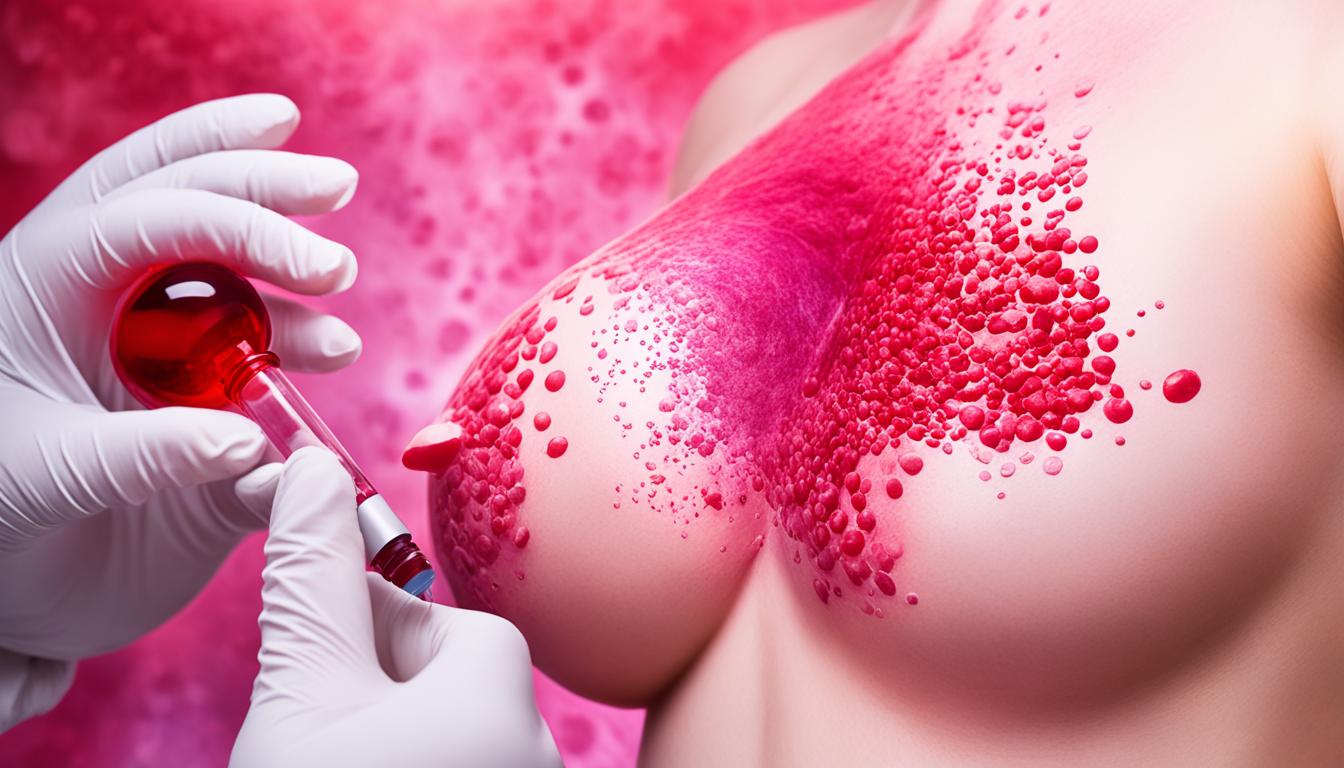Mastitis is an inflammatory disease that targets the breast. It is often caused by a bacterial infection, which leads to symptoms like pain, swelling, redness, and fever. Bacteria can get into the breast through sore or cracked nipples, primarily affecting breastfeeding women. Yet, it can also occur in women who aren’t breastfeeding, though this is rare. A doctor diagnoses mastitis with a physical check-up and may use breast ultrasound or mammogram tests.
Treating mastitis usually requires antibiotics to fight the infection. Managing pain, improving milk flow, and relieving breast engorgement are also parts of the treatment plan. For some severe cases, such as a breast abscess, surgery might be necessary to drain the abscess.
Key Takeaways:
- Mastitis is an inflammatory disease that affects the breast.
- Bacterial infection is a common cause of mastitis.
- It can occur in breastfeeding and non-breastfeeding women.
- Diagnosis involves a physical examination and possibly imaging tests.
- Treatment includes antibiotics, pain relievers, and measures to improve milk flow.
Stem Cell Therapy for Breast Infection: An Innovative Treatment Option
Recent studies are looking into stem cell therapy for treating mastitis, a common type of breast infection. Mesenchymal stem cells (MSCs) play a crucial role in regenerative medicine. They have special properties that suit this field well.
Mesenchymal stem cells come from different places, like bone marrow and fat tissue. In studies with dairy cattle, these cells have shown promise in battling infections. They have been successful in reducing the presence of harmful bacteria that cause infections like mastitis.
Using stem cell therapy can also lower the somatic cell count (SCC) in milk. This hints at a decrease in inflammation. This could help improve mastitis symptoms and speed up recovery.
Doctors can give stem cells through the blood or by injecting them directly into the breasts. The best approach varies from case to case. Nevertheless, we still need more studies to know how useful this therapy is for humans with breast infections.
Conclusion
Breast infections, like mastitis, bring a lot of pain and can even cause problems for women. Although antibiotics are often used to treat mastitis, many are looking into stem cell therapy as another choice. This type of therapy could work on its own or together with antibiotics.
Research shows that giving patients cells from donors’ bone marrow or fat can lessen the bacteria and swelling in the breast. This improvement helps with symptoms and might speed up the healing process. The idea of using stem cells to treat breast infections shows good potential.
Yet, more studies are necessary to find out if using stem cell therapy for breast infections is safe and works well over time in humans. The future of treating breast infections might include several methods combined. This could mean using a mix of antibiotics, pain relief, and stem cell therapy. The goal would be to get better results and cut down on possible problems.

